 This TV series might not be extremely popular worldwide but it’s fresh, melodramatic, and displays rather period-accurate costumes. If you haven’t seen it yet, give it a try. There are 3 seasons displaying the changes in fashion at the turn of the 20th century. Anyway, in this article, we’ll analyze a lot of the movie costumes you can see in this show, including the outfits of some major and minor characters, folk costumes of Mi’kmaq ethnic group (indigenous Canadian people), and various hairstyles demonstrated in the series.
This TV series might not be extremely popular worldwide but it’s fresh, melodramatic, and displays rather period-accurate costumes. If you haven’t seen it yet, give it a try. There are 3 seasons displaying the changes in fashion at the turn of the 20th century. Anyway, in this article, we’ll analyze a lot of the movie costumes you can see in this show, including the outfits of some major and minor characters, folk costumes of Mi’kmaq ethnic group (indigenous Canadian people), and various hairstyles demonstrated in the series.
This article is based on the video from YouTube channel “Costume CO”.
Read also: Movie costumes in “Anne with an E” were based on period-accurate female clothing
Stage costumes in “Anne with an E” TV show. Anne Shirley-Cuthbert and the Avonlea girls
“Anne with an E” is a Canadian drama TV series based on the 1908 novel “Anne of Green Gables” by Lucy Maud Montgomery and adapted by writer and producer Moira Walley-Beckett for the CBC and Netflix. According to Wikipedia, the story takes place in the late 19th century but a clever viewer noted that the calendar in the 1st episode is dated 1896. Let's get into the costumes of this show.
The costumes were created for the screen by Canadian costume designer Anne Dixon in Season 1 and Alex Reda in Seasons 2 and 3. The setting, costume sets, and props were highly immersive.
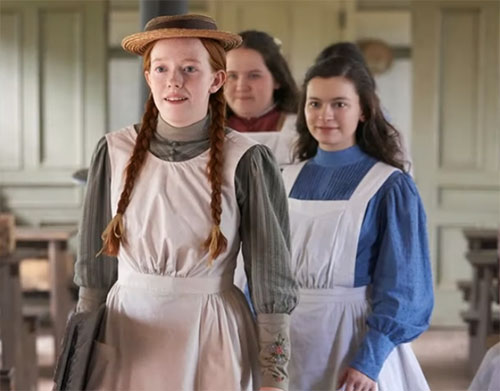
The designer Anne Dixon said in a behind-the-scenes video that “A huge portion of our costumes were made in our shop, and the reason why is that we were trying really hard to get the feel of P.E.I. (Prince Edward Island, a province of Canada) mid-Victorian – Edwardian. To get that pulse, we wanted to have the natural feeling of it, the rawness of it, and even the cuts. We worked really hard on getting some specific shapes because, again, it's not high fashion, it's rural, it's working-class”.
Movie costumes of Marilla and Matthew Cuthbert
Marilla Cuthbert
For Marilla's Season 1 costume, here are antics and storyboards from her website.
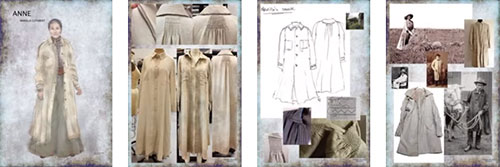
Anne Dixon said, “Marilla's smock coat, which she goes milking the cows with, the fabric was brand new and then we had some details that was important to me. It's about the reality of it as well”.
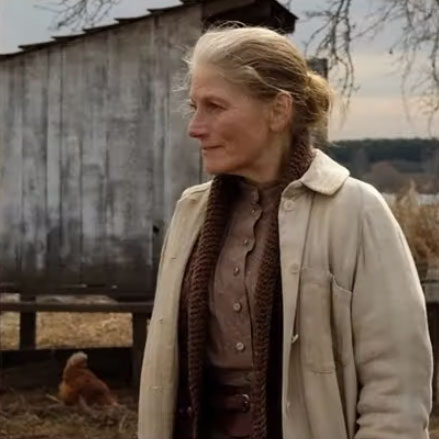
Marilla's coat is similar to this 1910 duster from the McCord Museum in Montreal.

This is Dixon's costume design and moodboard of Marilla's other looks.

Most of Marilla's dresses and blouses are made from printed calico fabrics.
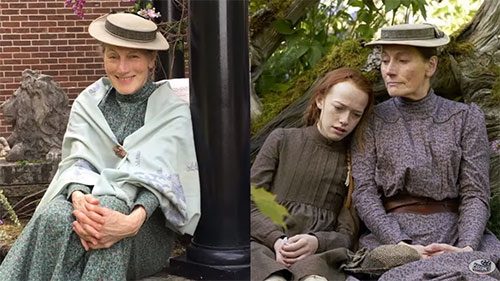
Just to give you some context, here are a few examples of late-19th-century printed cotton day dresses
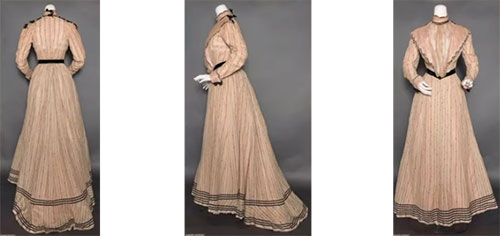
American cotton dress, 1895

Printed cotton day dress, 1890
Actor Geraldine James who plays Marilla stated that her costumes help her get into character. She said, “When you have the costumes you're working in, when they feel so right for the work you're doing, honestly, it's like half your work is done”.
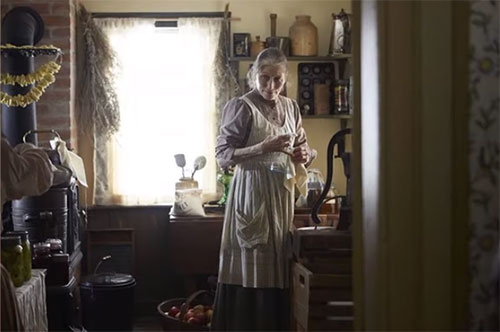
Along with her dresses, Marilla also wears calico printed shirtwaists, a type of blouse.
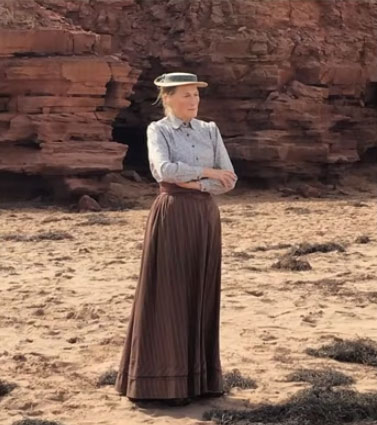
According to FIDM, the shirtwaist first emerged in the 1860s as a casual daytime alternative to the matched bodice and skirt ensembles worn by nearly all well-dressed women. Most frequently worn by young women, the shirtwaist was usually paired with a dark-colored skirt and accessorized with a belt or sash.
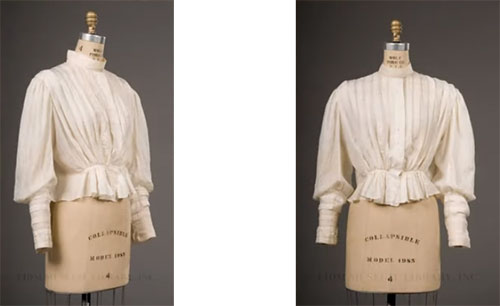
Shirtwaist, 1890s
Marilla dons a rather masculine leather cincher belt, a statement piece that she wears consistently for three seasons.

Boots are the footwear of choice for all of the women, men, and children of Avonlea.
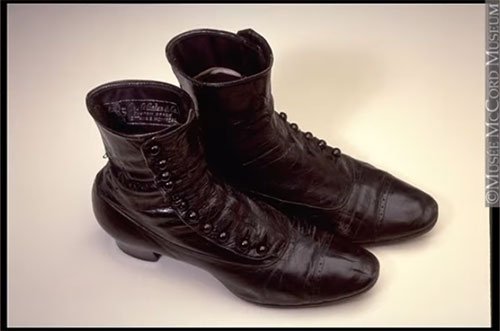
Boots, George G. Gales & Co., about 1900
According to McCord Museum, in 1890 in Canada, the production of shoes increased to more than 2.5 million pairs. Montreal then occupied 60% of the Canadian footwear market.
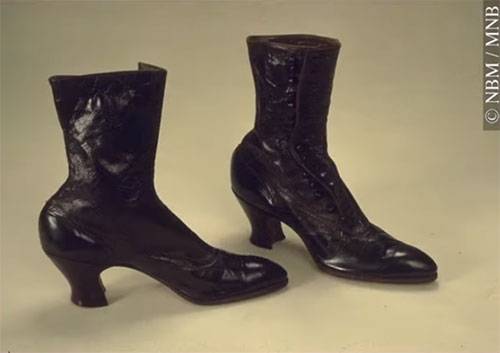
Boots, 1900-1910
About 1888, a working-class family spent about 60-70% of its income on food, 21% on rent, and 11% on fuel. The remaining money – what there was of it – was used to buy clothing and shoes.
Matthew Cuthbert
In Season 1, Matthew has essentially two looks: his good dark suit that he wears to pick up Anne from the train station and his farmer outfit.
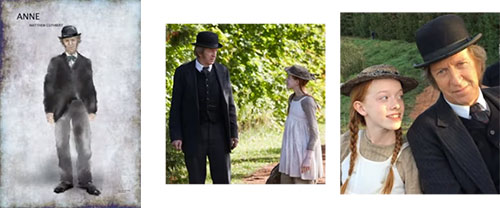
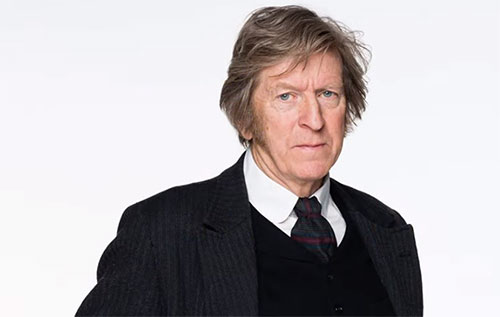

There are lots of layers here. He wears henley undershirt, collarless shirt, trousers, waistcoat, and a neckerchief.
Anne Dixon also created a linen sack coat to wear over his work clothes for messy work.

In this picture on the left, we see that actor R. H. Thomson is wearing both braces and a leather belt to hold up his pants.
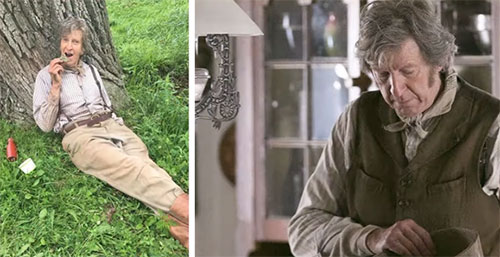
You can see how high-waisted the trousers were in the late 19th century and that the front would always be a button fly.
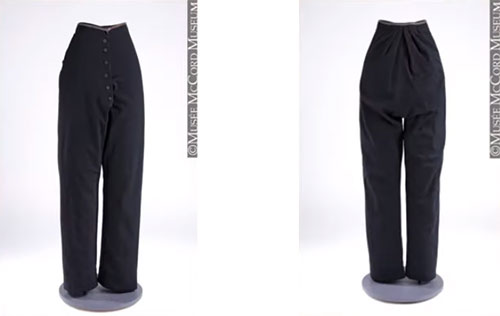
Riding trousers, about 1890-1895
On colder days, Matthew wears this oiled leather jacket.

Matthew has a few bowler hats that he wears. Here are two examples of this type of felt hat from the turn of the last century.
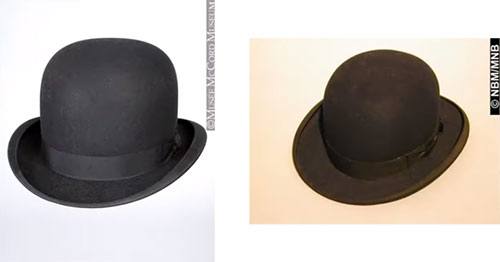
Bowler hats, about 1900
These toe-cap brogue-style boots are the typical style worn by men during this period.
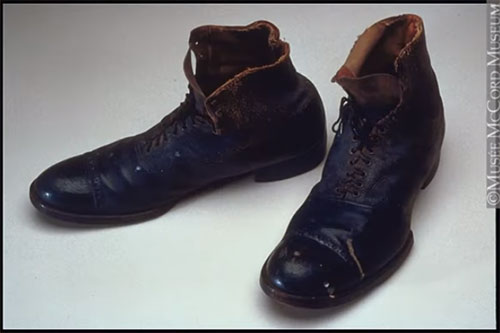
Boots, about 1900
Male costumes in “Anne with an E”
Besides Matthew Cuthbert, we haven't touched on the men too much.
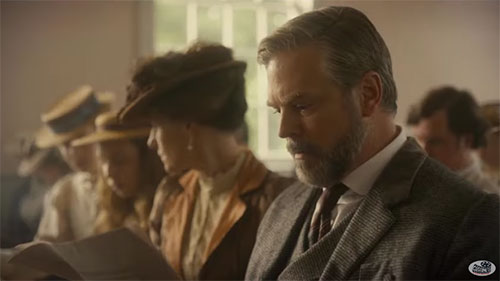
Mr. Andrews is pictured here wearing a three-piece sack suit and, while he doesn't know it, he himself is actually challenging the status quo as well.
According to the McCord Museum, the sack coat, which is the forerunner of the modern suit jacket, was introduced in the 1860s. Unlike the frock or morning coat, the sack was commonly worn with matching trousers and waistcoat.
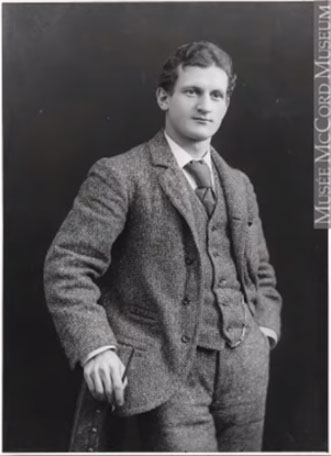
Sack suit, 1893
At the end of the 19th century, young men who had the audacity to challenge the dominance of the morning and frock coats began to favor the sack for everyday business wear.
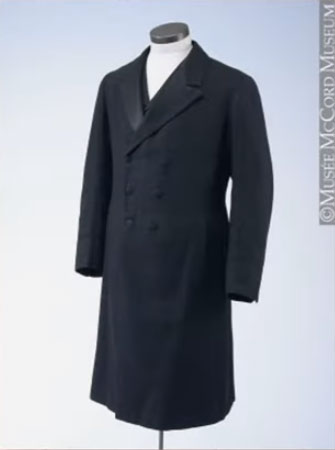
Frock coat and waistcoat, 1875-1900

Portrait, Cape Sable Historical Society
“Bash” and Gilbert's costumes are usually kept simple – collarless shirts and vests, trousers, suspenders, and boots.
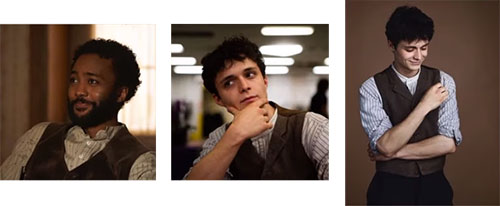
This jacket appears to be the precursor to the Sudbury dinner jacket, which is Canada's unofficial uniform.
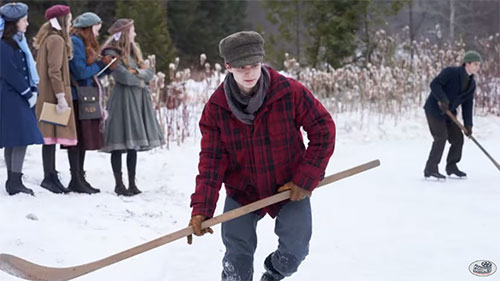
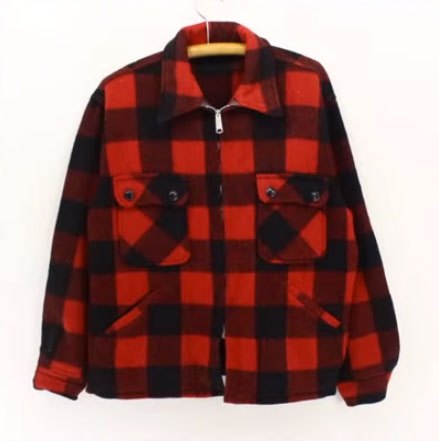
Here are a few examples of collars and ties from the late 19th century.
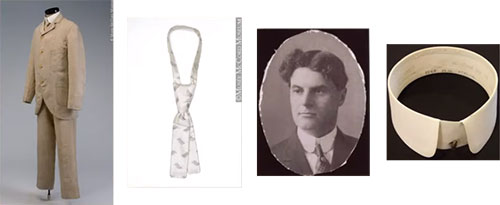
For significant events, both “Bash” and Gilbert ad collars, ties, and jackets. And while “Bash” wears a bowler hat, Gilbert wears a few varieties of hats like the poor-boy or newsboy style of hat.
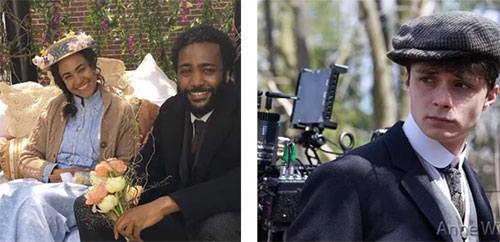
The McCord Museum states that “This is the type of hat often worn by newsboys. It had the advantage of being light and warm. Many models had retractable earflaps that offered additional warmth in long winter nights” – a definite must in Canada's climate.
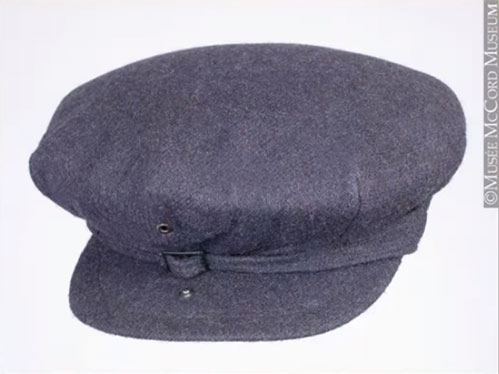
Newsboy cap, 1900-1925
Hairstyles in “Anne with an E”
The hair and wigs in this series are exceptionally good. All of the adult women had their hair pinned up, while all of the young girls had their hair down, with the exception of Anne, of course, who wore her hair in braids.
The transitioning of the different stages of Anne's hair was really well done.
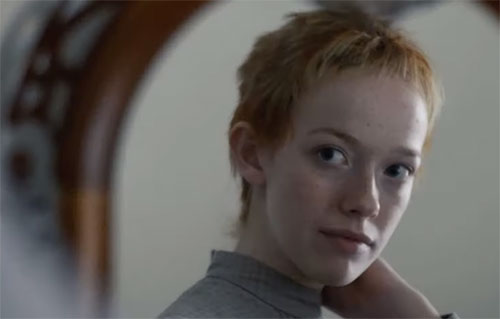
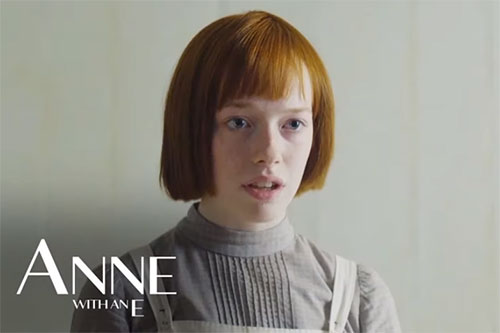
There was only one point that you could tell that Anne was wearing a wig, wearing what they called “baby braids”. Though, the average viewer probably wouldn't have noticed that.
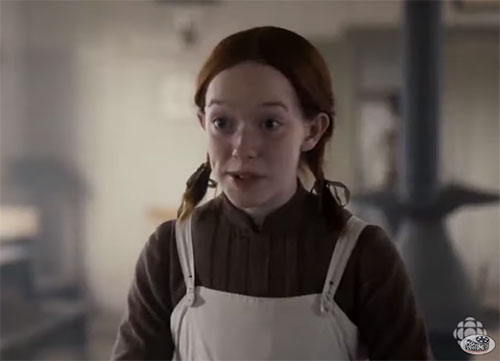
If to talk about male characters, Mr. Phillips’ wig isn’t that accurate.
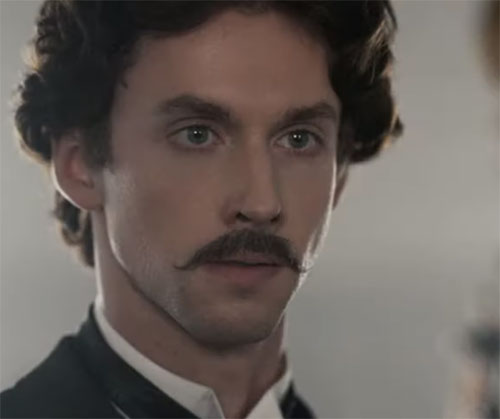
Here's an example of a man's hairstyle from 1900. The photo is from Antigonish Heritage Museum.
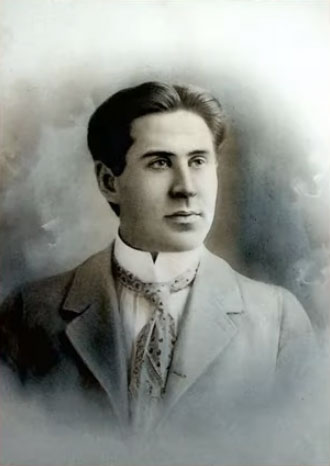
When we look at the hairdos and headdresses at the party in Aunt Josephine’s house, we see wonderful flower crowns, which took weeks to do. They are all handmade and hand-painted. The designers built over 1,500 individual flowers to go in these crowns for the heads of the guests of this party.
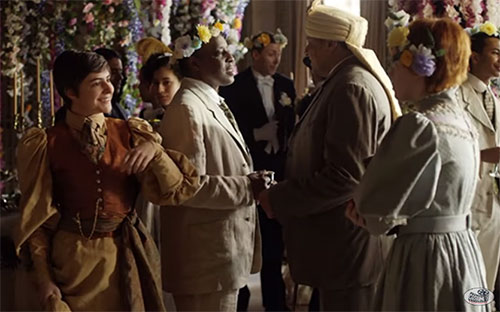
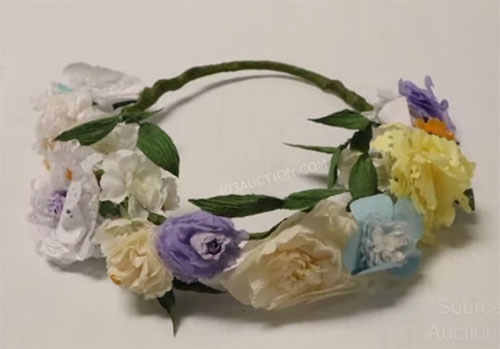
Alex Reda said, “We actually made hair braids and created a birdcage out of hair. For some of the hats, we actually sourced real found flowers and grasses and feathers to put in the hats. With a show like this, you always have to be aware of what would have actually been available to people because it's P.E.I. in 1898. We're not in New York, we're not in Paris, you have to sort of use your imagination to figure that out”.
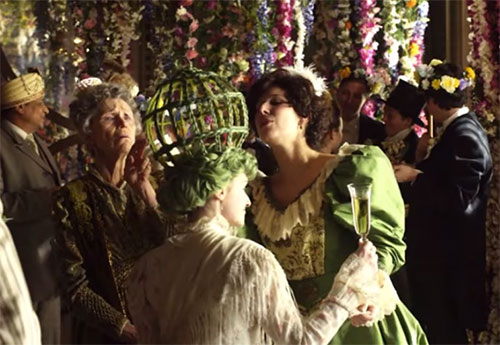
Stage costumes of Ka’kwet and the Mi’kmaq
Here are a few accurately made movie costumes worn by the Mi’kmaq – the eastern woodlands indigenous peoples in Canada. We’ll work deeper and try to make a separate article dedicated to folk clothing of this ethnic group.
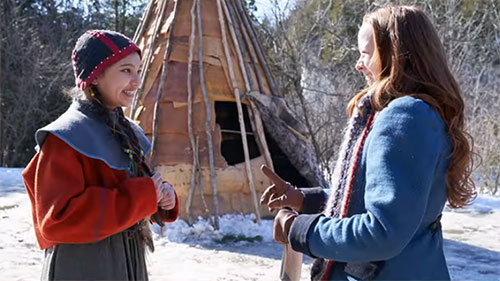
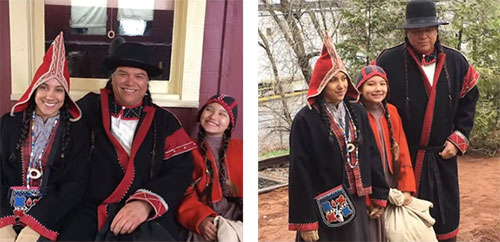
According to the McCord Museum, after 1600, the Mi’kmaq were able to obtain European trade goods such as wool cloth, blankets, thread needles, and glass beads. It was not long before Mi’kmaq women had replaced their traditional skin clothing with new styles made with the new materials.
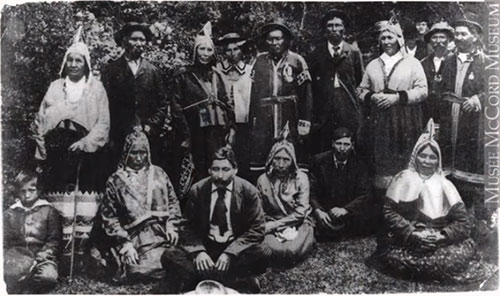
Mi’kmaq group, about 1910
They created a particular outfit reserved for special occasions. It included a wool skirt and bolero or jacket decorated with silk ribbons and glass beads.
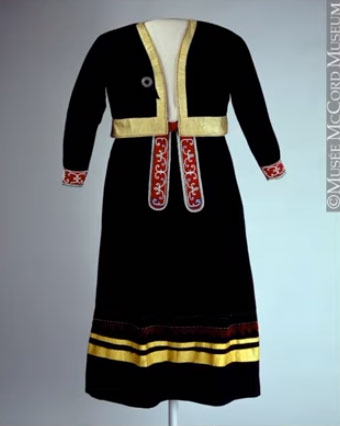
Mi’kmaq bolero and skirt, 1845-1855
The coat on the left looks just like the one worn by Ka’kwet’s father.
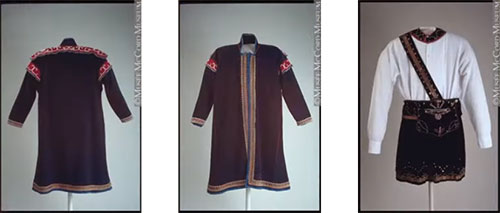
Mi’kmaq coat, 1865-1900. Mi’kmaq collar, 1840-1860
While these caps, especially the one on the right, look very much like Ka’kwet’s.
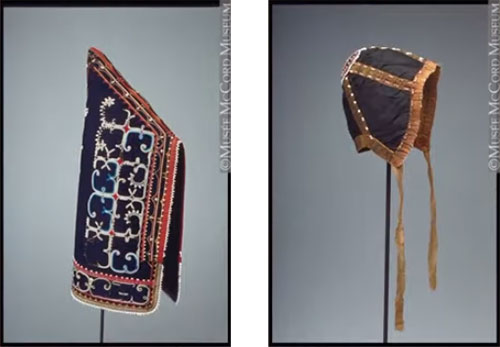
Mi’kmaq peaked cap, 1845-1855. Mi’kmaq cap, 1900-1910
Read also: Movie costumes in “Anne with an E” were based on period-accurate female clothing
Stage costumes in “Anne with an E” TV show. Anne Shirley-Cuthbert and the Avonlea girls
(c)


